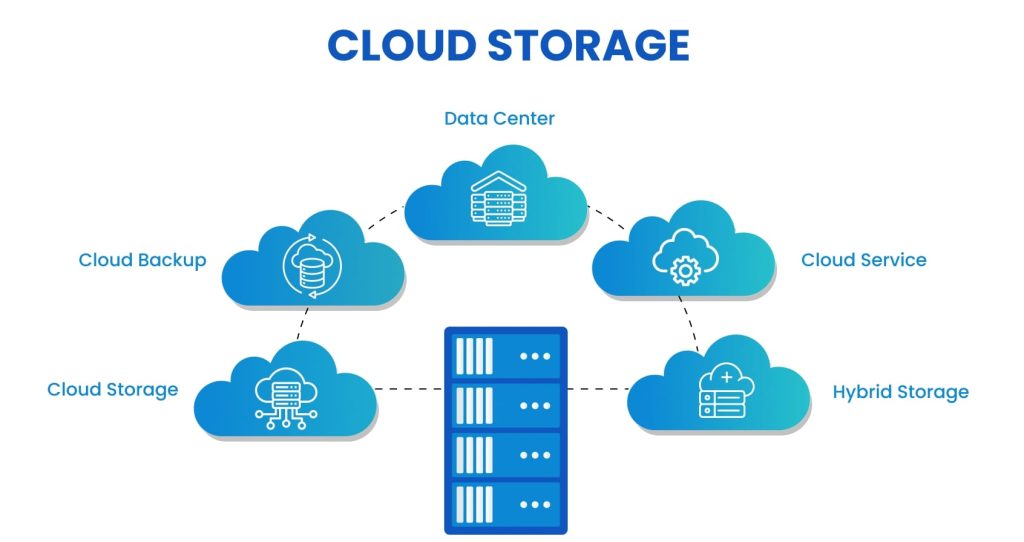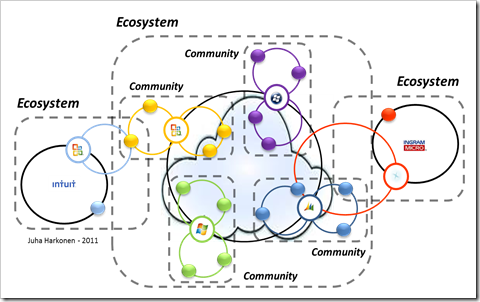The Cloud Ecosystem: Users, Providers, and the Next Frontier


The Cloud? Cloud has grown to be an everyday phrase in Software world. Similar to the actual cloud in the sky, the cloud in the digital world is also placed in a virtual environment, which we can’t specifically point out physically. Central to it all, taking it to the bottom, is the fact that cloud providers too have physical storage in which so called cloud data is stored. The most outstanding fact is that we can retrieve the data on the cloud at any point of the globe. Instead of our immeasurable data being stored locally on our individual devices that is customized to us, it gives us an online location in which to store and maintain our data. Isolated Environments: Enables emulating and collection of isolated guest programs. The procedure which establishes a virtual arena in which to keep and organize our information. This Virtualization simply gives us the capability to maximize utilising our physical computer hardware. This is achieved through resource sharing which entails processors, memory and storage space of one physical computer serving many different virtual machines (VMs). The core that cloud computing is driven by is virtualization.
- Multi-Tenant Model: Allows physical storage to be dynamic and shareable and is able to supply many consumers simultaneously.
- Isolated Environments: Allows emulation and gathering of isolated guest programs. Means that it enables multiple computing environments to co-exist on the same host and guests can also run in entirely discrete environments.
Ex: Take the case that Amazon Web Services (AWS) deploy a physical server and within this physical server they have installed 3 different Virtual Machines on which to implement various application environments such as one application environment that is based on Windows Server, another based on Ubuntu Linux, and another based on Red Hat Enterprise Linux. In the concept of virtualization, therefore, though they are using the same physical hardware, each of them is assigned its own space in the CPU, RAM, and disk circuit respectively. Greater security: The virtualization gives the VMM(Virtual Machine Monitor) or hypervisor the opportunity to watch and maintain guest systems acting as a buffer between the host and the programs. This enhances the system security as hypervisor exists to ensure that malicious attacks are screened away and the rest of the programs will be secure in case one of them is attacked.
Models of Cloud services delivery

Infrastructure-as-a-Service (Iaas)
Give us a Virtual Machine, which we can fill in how we intend, and make it pertinent to the project. needs.
Platform-as-a-Service (PaaS)
Offer a development, execute and deployment environment out of the box setting, server, OS, and hardware agnostic. Provides the ability to control code and application and hardware, networking and even os configurations are abstracted.
Software-as-a-Service (SaaS)
Makes us ready-to-use software. We do not run and we do not control the infrastructure or the platform.
Cloud offers more than coding under virtualization.
On-demand self-service
The main issue that on-demand self-service addresses in the IT is the slowdown of the existing procedure. On-demand self-service enables the users to log in to the management console of a cloud provider and access APIs to perform operations immediately. This could be as simple as spinning a new virtual machine leading to the creation of storage buckets, the deployment of databases or the configurations of an entire network without any physical hand.
Scalability & Elasticity
Magic lies in the area of scalability in businesses. The constraints of this type of cloud provider, such as computing power, storage and network capacity, can be dynamically scaled up or down according to a changing demand in real-time.
Ex: If it is done with an e-commerce store, its northern lights can automatically increase server capacity during the black Friday without the manual effort, and then reduce the capacity to reduce costs later.
Extensive Access with the Network
Cloud resources are everywhere-as long as you have internet connection. This availability assists across geography, nomadic workforces and distributed organizations.
Ex: Go into Google Drive on your phone and start a document with a client, go back to the office and pick up on your laptop.
Measured Service
Cloud platforms monitor the use of resources automatically such as CPU time, storage space or bandwidth and charge you respectively. It does not require extra hardware purchase and maintenance in case of need later.
Ex: You only pay Azure what you used that month; 2.3 GB of storage.
Disaster Recovery/ High Availability
Providers make copies of your information in different geographic locations. In the event that one of the data centers is offline, there is an immediate switch that happens to the other one.
Ex: multi-region replication in Amazon S3 makes sure that your data is secure and would be available regardless of having an outage in a particular region.

The point of view of Cloud Provider
On the side of the cloud provider, despite the fact that, the cloud ends up on physical machines stored in data centers, it is much bigger than this since they provide the users with physical machines, high speed networking equipment, hypervisor and applications in order to ensure that the business is on the virtual side. Besides, they work on automations in order to protect the systems to help them be in accordance with the regulations including ISO 27001 and GDPR. Serverless architecture, AI monitoring, and quantum computing contribute to the constantly changing innovation that the cloud service providers seek, and enhance the reliability, efficiency, and security of cloud services they provide.

Future of Cloud – Quantum Cloud Services
Quantum cloud computing enables one to access quantum processors without having an expensive hardware on the internet. It is a combination of quantum and classical computing to make complex computations growth or solution as in optimization, cryptography and simulations.
- On-Demand Access to simply run quantum algorithms on-demand through the cloud.
- Hybrid Integration which integrates quantum and classical processing.
- Elastic to enable any size of users to opportunely share quantum resources.
- Advanced Problem Solving -Quicker solutions to AI, chemistry and cryptography.
- Quantum-Safe Security -Secures data against quantum attacks of the future.
There is now a variety of cloud providers (IBM, Microsoft, Google, etc.) that offers state-of-the-art quantum computing and makes it affordable and feasible to use in research, innovation, and business usage. With cloud computing, data and apps are now scalable, flexible and available everywhere. Its capabilities supported by such features as virtualization, on-demand resources, and quantum cloud services emerging in the cloud market can accelerate innovation without compromising system security and efficiency. The cloud is not merely a tool but it forms the spine and the future in modern-day digitality.

